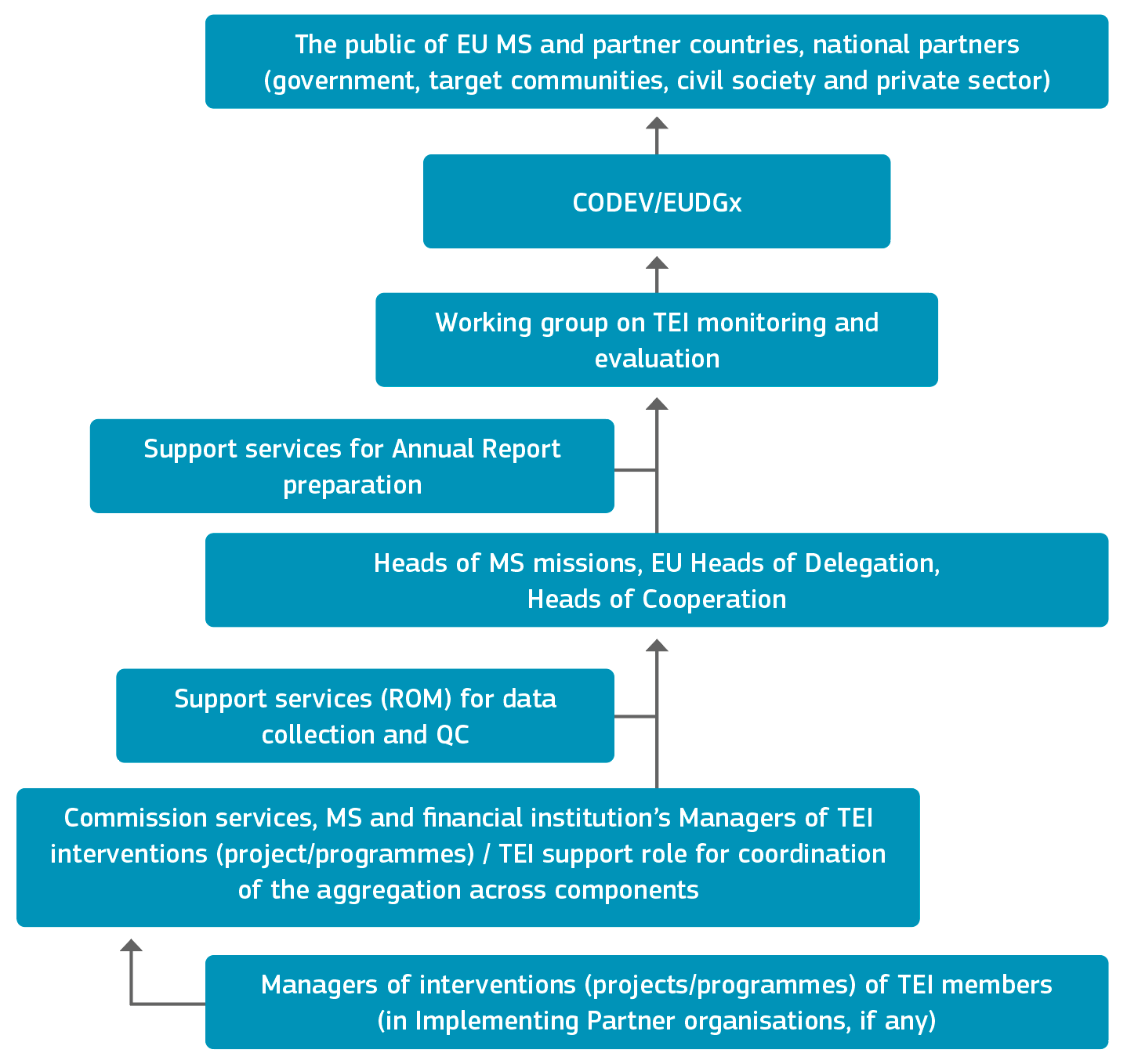3.3 Proposed tasks and responsibilities
0
| Tasks | Responsibilities |
|---|---|
| Collecting data on relevance, effectiveness and efficiency, as well as on TEI value added | Commission services will collect and analyse available data on the relevance, effectiveness and efficiency of the TEI implementation, as well as on the TEI value added. Data will come from evaluations, joint monitoring activity reports, the reporting on aggregated indicators and Stories of Change submitted by TEI, based on inter alia interviews with national partners and TEI members and implementing partners. |
| Collecting and aggregating data on results |
|
| Data quality control (QC) |
|
| Aggregated data analysis & publication | The Commission services will prepare an annual report on TEI results that are available and agree with the WG members for their endorsement. It will then be presented to CODEV and the EUDGx and communicated by TEI members’ via established channels. |
| Dissemination in partner countries | TEI members will disseminate reports on aggregated results to national partners, including its presentation to the government, target communities, civil society and private sector entities, as well as discussion of lessons learned. |
Image

